Power and influence theory of leadership pdf
that leadership is influence. The following overview of leadership theories is intended to provide a synopsis of some of the research conducted on leadership in the last 50 years. There is a list of suggested reading (page 4) to help you learn more about the theories that appeal to you. University of Arkansas, United States Department of Agriculture, and County Governments Cooperating
Leadership and power Leadership does not exist without power. Thus we have to reflect on power in order to lay a theoretical foundation for responsible leadership. This interdisciplinary article collects insights from the disciplines of theology, sociology, and cross-cultural management. It provides a concise summary of what a Christian leader should know about power in order to use his/her
Power is the capacity to cause change, produce effects on others or potentially influence others (PSU WC, L. 7.). Power is the function of a relationship because it belongs not only to the leader, but also to the followers and the situation.
The New Psychology of Leadership: Identity, Influence and Power by S. Alexander Haslam, Stephen D. Reicher, and Michael J. Platow Article (PDF Available) in Personnel Psychology 65(2) · June 2012
Jeffrey W. Lucas is an associate professor of sociology at the University of Maryland. He carries out basic experimental research on group processes, particularly status, power, and leadership. Amy R. Baxter is a PhD candidate in the Department of Sociology at the University of Maryland. Her current
zation theory, then describe the proposed leadership theory followedbyempirical support for its core ten- ets, and finally I explore a range of specific implica-
The trait theory of leadership says that there are certain characteristics that effective leaders possess e.g. drive, intelligence, self-confidence, assertiveness, good decision-making, empathy. Traits are external behaviours that are observed and experienced by people. Many things may influence these behaviours. Some traits or behaviours will have a negative impact on leadership style while
The Power/Interaction Model of Interpersonal Influence The bases of power are included within a larger context through the devel- opment of a Power/Interaction Model of Interpersonal Influence (Raven, 1992). The model begins with a consideration of the motivation for influence and the use of power, then to the factors which lead to choice of power strategy, preparatory devices for …
For some reason, Knudsen and Iacocca competed for power and influence instead of using cooperatively a power base to which both contributed as is the case with most workable coalitions. In …
Persuasion and influence are both leadership skills, but persuasion is not the same thing as influence. Convincing someone to do what you want them to do is persuasion. On the other hand, influence is part of your identity.
Transformational Leadership through Power and Influence March 12, 2016 by Philip Christopher Desbrow Leave a Comment A transformational leader can be defined as how a person who can move the organization and the people working for the organization towards a greater good.
influence his associates in a positive way to reach the goals of the organization. Furthermore, the transformational leadership approach can help managers become exceptional leaders. This article will explain the transformational leadership approach by discussing its strengths, weaknesses, and steps for application. Transformational Leadership To use this approach in the workforce, one must
Leadership as social influence. A common definition of leadership is “a process of social influence by which an individual enlists the aid and support of others in the
University of Michigan, situational leadership theory, the path goal theory, twofactor theory of transformational leadership and transactional leadership. In recent years, enterprises are facing profound technology and business revolution.
Leadership – Identity, Influence and Power Further Reading Module 3 Topic 1 Reicher, SD & Haslam, SA & Platow, MJ 2007, ‘The new psychology of leadership,’ Scientific
The Review of Empowerment Leadership file.scirp.org
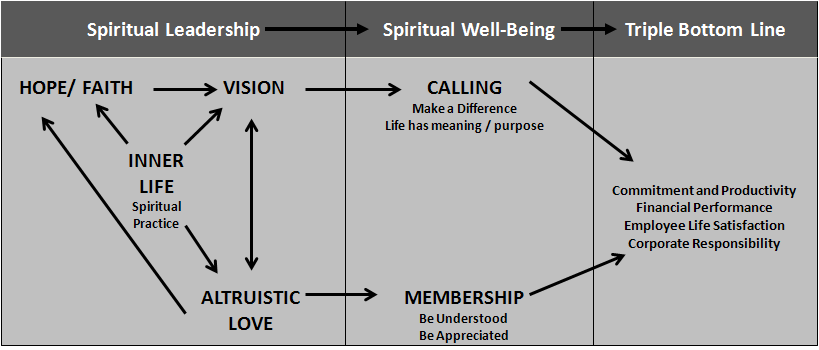
Power Influence and Diversity in Organizations Jeffrey
When it comes to organizational power, following Bertram Raven’s “Basis of Social Power” there are 5 basis of power, all of which are influential, but at greatly disparate levels. Simply put, not all power is created equal, and only certain types of power creates the influence required to drive meaningful organizational change.
Leadership Styles and Organizational Citizenship Behavior: The Mediating Effect of Subordinates’ Competence and Downward Influence Tactics Lee Kim Lian UCSI University Low Guan Tui Vesseltech Engineering Sdn Bhd The objective of this study is to test a theory-based model predicting the relationships between leadership styles, subordinates’ competence, downward influence tactics and …
The influence and power theory of leadership finds a network of interaction among people, fashioned by the influence and power that comes from the leader himself. Followership and leadership are the outcomes of the flow of the power among different individuals. Influence and power offer the motive power that works behind every organization, initiative and lubrication that keeps the people in

It’s a concern that dates back to Machiavelli and beyond: As a leader, would you rather be lovable or strong? Can you be both? These questions lie at the core of this month’s Spotlight on
leadership)theory)provides)similar)exhortations.))Writing)about)charismatic)and) influence)tactics,)relevant)contemporary)leadership)theory)has)been)reviewed) toascertainpossibleindicationsaboutinfluenceprocessesth at)may)be)in)use) byeffectiveleaders.) 1.2 Research!questions! leaders?) )!) )).) effectiveness.) leaders?)!!)).)))! +)))!)))!) ))!) + • % “))!)!) )!))))!)))) …
Functioning in a leadership role involves exerting influence and power. One person can One person can play this role, or it can be shared among the group members.
Leadership is the ability to influence others. You can make a choice to either influence people cohesively or forcefully. The use of forceful influence is manifested in people who use positional leadership to get things done through others.
10/07/2014 · The Four Core Theory Groups In this video we will look at each of the four core groups of theory, and explore some of the tools and models that apply …
What role does power and influence have on leadership styles? What impact does it have on follower/staff behaviour and performance? This is a question that all leaders, whether they be organisational leaders, business leaders, team leaders or project leaders need to address. Power is the capacity of others to exert their will over others. It is the ability to make things happen, overcoming
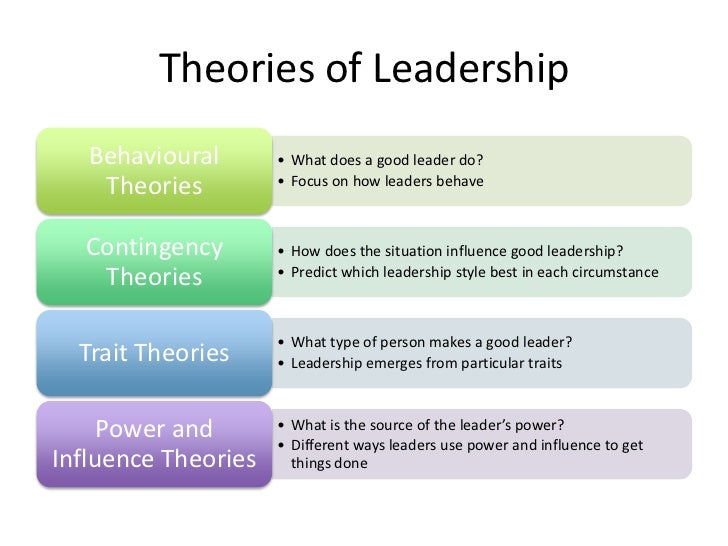
THE IMPACT OF PERCEPTIONS OF LEADERSHIP STYLE, USE OF POWER, AND CONFLICT MANAGEMENT STYLE ON ORGANIZATIONAL OUTCOMES VIRGINIA P. RICHMOND JOHN P . WAGNER JAMES C. MCCROSKEY The degree of association between supervisor and subordinate perceptions of the supervisor’s leadership style, use of power by the supervisor, and the …
Reporter : Alex S Regado Professor : Dr. Neri S. Pescadera Subject : Organizational Theory and Behavior (DPM 606) LEADERSHIP Leadership – is the ability to develop a vision that motivates others to move with a passion toward a common goal. Leadership – is the “process of social influence …
The second style in the Power Theory section is that of French and Raven’s five forms of power. It highlights different elements of power and how a leader can influence people through the use of them. There are effectively three types of positional power (legitimate, coercive and rewards) and two type so personal power (charm and appeal). It suggests that using personal power is the most
• Leadership is “interpersonal influence, exercised in a situation, and directed, through the communication process, toward the attainment of a specified goal or goals” (Tannenbaum, Weschler, & Massarik, 1961, p. 24).
Different Leadership Theories?
paradigm shift to a new theory of leadership in which “common” people gained power by virtue of their skills (Clawson, 1999). New technology, however, was accompanied and reinforced by mechanization of …
We know this theory allows for a large network of interaction of people from all walks of life, they have the ability to shape these people through the influence and power of the leader. So the objective was to examine the forms of power and the relationship of different power. There are five sources of power that are commonly referred to when describing leadership.
Leadership, Influence, and Power. Leadership is one of the most critical factors for organizational success. Over the past several decades, researches have been conducted to study leadership theories, models, and applications in various types of organizations and environments.
There can be no leadership without influence, because influencing is how leaders lead. In their classic book on leadership, Leaders: Strategies for Taking Charge, Warren Bennis and Burt Nanus echo this point: “There is a profound difference between management and leadership…
The power and influence theory of leadership sees a network of interaction between people, shaped by the power and influence emanating from the leader. Leadership and followership are products of the flow of power between individuals.
Leadership, power and influence 1 Leadership, power and influence: some notes on people’s relationship to power1 How much power is perceived, can be located, used and felt depends on how it is conceived (Lorenzi, 2006). At its simplest conceptualization, power is the recognition and intentional
PDF On Jul 5, 2018, Chris James and others published An affective paradigm for educational leadership theory and practice: connecting affect, actions, power and influence
Power and Social Influence G roups use their power to influence behaviors by providing information on how to behave and exerting pressure to encourage compliance. Team members gain power from personal characteristics and their positions, and use a variety of power tactics to influence other members. The dynam- ics of power in teams is a major influence on leaders’ behaviors, how team … – give an example of leadership
Leadership Identity Influence and Power Open2Study
Leadership Concepts of Power and Influence primeessays.com
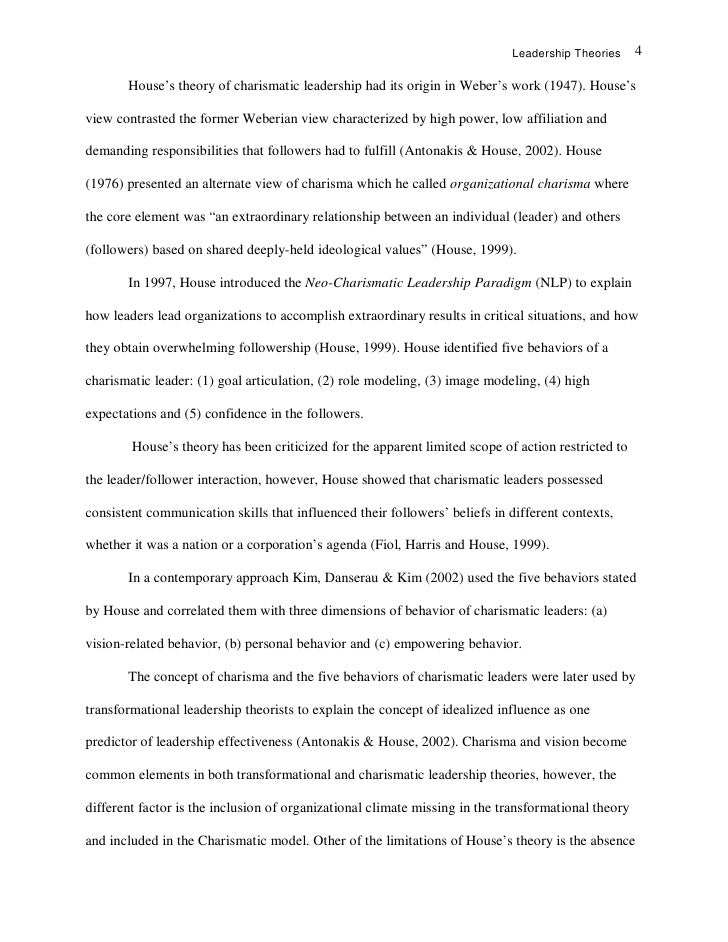
The Power And Leadership Management Management Essay
Leadership and the Power of Influence Firefighter
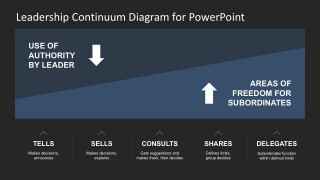
Leadership Skills Persuasion and Influence
Core Leadership Theories YouTube
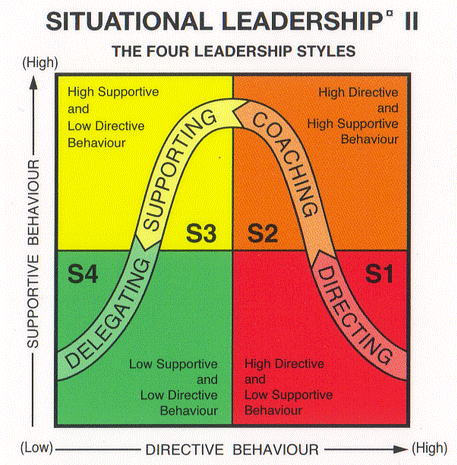
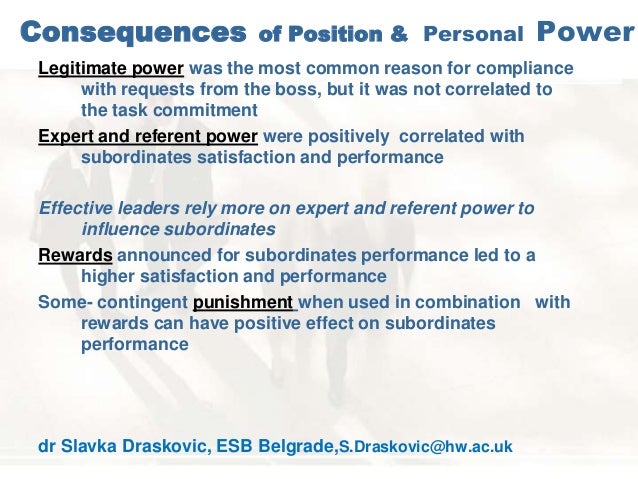
Leadership Influence and Power Noetic Mind
Influence and Leadership Harvard Business Review
– Leadership power and influence 1 Simon Heliso Kuka
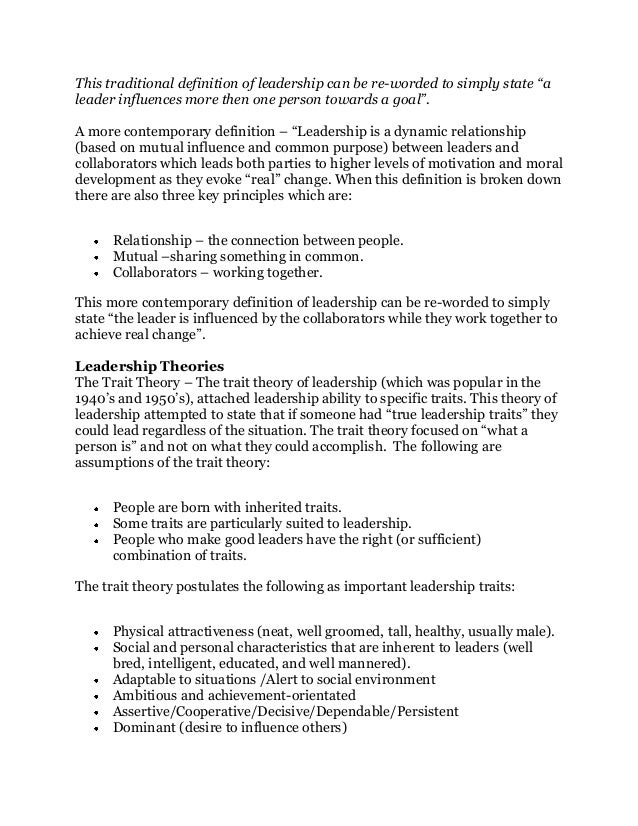

Influencetacticsandleader effectiveness! Howeffective
power and influence theory of leadership
Leadership is the ability to influence others. You can make a choice to either influence people cohesively or forcefully. The use of forceful influence is manifested in people who use positional leadership to get things done through others.
The influence and power theory of leadership finds a network of interaction among people, fashioned by the influence and power that comes from the leader himself. Followership and leadership are the outcomes of the flow of the power among different individuals. Influence and power offer the motive power that works behind every organization, initiative and lubrication that keeps the people in
There can be no leadership without influence, because influencing is how leaders lead. In their classic book on leadership, Leaders: Strategies for Taking Charge, Warren Bennis and Burt Nanus echo this point: “There is a profound difference between management and leadership…
Power and Social Influence G roups use their power to influence behaviors by providing information on how to behave and exerting pressure to encourage compliance. Team members gain power from personal characteristics and their positions, and use a variety of power tactics to influence other members. The dynam- ics of power in teams is a major influence on leaders’ behaviors, how team …
Reporter : Alex S Regado Professor : Dr. Neri S. Pescadera Subject : Organizational Theory and Behavior (DPM 606) LEADERSHIP Leadership – is the ability to develop a vision that motivates others to move with a passion toward a common goal. Leadership – is the “process of social influence …
The second style in the Power Theory section is that of French and Raven’s five forms of power. It highlights different elements of power and how a leader can influence people through the use of them. There are effectively three types of positional power (legitimate, coercive and rewards) and two type so personal power (charm and appeal). It suggests that using personal power is the most
The trait theory of leadership says that there are certain characteristics that effective leaders possess e.g. drive, intelligence, self-confidence, assertiveness, good decision-making, empathy. Traits are external behaviours that are observed and experienced by people. Many things may influence these behaviours. Some traits or behaviours will have a negative impact on leadership style while
zation theory, then describe the proposed leadership theory followedbyempirical support for its core ten- ets, and finally I explore a range of specific implica-
that leadership is influence. The following overview of leadership theories is intended to provide a synopsis of some of the research conducted on leadership in the last 50 years. There is a list of suggested reading (page 4) to help you learn more about the theories that appeal to you. University of Arkansas, United States Department of Agriculture, and County Governments Cooperating
We know this theory allows for a large network of interaction of people from all walks of life, they have the ability to shape these people through the influence and power of the leader. So the objective was to examine the forms of power and the relationship of different power. There are five sources of power that are commonly referred to when describing leadership.
It’s a concern that dates back to Machiavelli and beyond: As a leader, would you rather be lovable or strong? Can you be both? These questions lie at the core of this month’s Spotlight on
Power Influence and Diversity in Organizations Jeffrey
The Power And Leadership Management Management Essay
What role does power and influence have on leadership styles? What impact does it have on follower/staff behaviour and performance? This is a question that all leaders, whether they be organisational leaders, business leaders, team leaders or project leaders need to address. Power is the capacity of others to exert their will over others. It is the ability to make things happen, overcoming
Power and Social Influence G roups use their power to influence behaviors by providing information on how to behave and exerting pressure to encourage compliance. Team members gain power from personal characteristics and their positions, and use a variety of power tactics to influence other members. The dynam- ics of power in teams is a major influence on leaders’ behaviors, how team …
Jeffrey W. Lucas is an associate professor of sociology at the University of Maryland. He carries out basic experimental research on group processes, particularly status, power, and leadership. Amy R. Baxter is a PhD candidate in the Department of Sociology at the University of Maryland. Her current
The power and influence theory of leadership sees a network of interaction between people, shaped by the power and influence emanating from the leader. Leadership and followership are products of the flow of power between individuals.
Leadership power and influence 1 Simon Heliso Kuka
Power Influence and Diversity in Organizations Jeffrey
Leadership Styles and Organizational Citizenship Behavior: The Mediating Effect of Subordinates’ Competence and Downward Influence Tactics Lee Kim Lian UCSI University Low Guan Tui Vesseltech Engineering Sdn Bhd The objective of this study is to test a theory-based model predicting the relationships between leadership styles, subordinates’ competence, downward influence tactics and …
The influence and power theory of leadership finds a network of interaction among people, fashioned by the influence and power that comes from the leader himself. Followership and leadership are the outcomes of the flow of the power among different individuals. Influence and power offer the motive power that works behind every organization, initiative and lubrication that keeps the people in
Persuasion and influence are both leadership skills, but persuasion is not the same thing as influence. Convincing someone to do what you want them to do is persuasion. On the other hand, influence is part of your identity.
10/07/2014 · The Four Core Theory Groups In this video we will look at each of the four core groups of theory, and explore some of the tools and models that apply …
Reporter : Alex S Regado Professor : Dr. Neri S. Pescadera Subject : Organizational Theory and Behavior (DPM 606) LEADERSHIP Leadership – is the ability to develop a vision that motivates others to move with a passion toward a common goal. Leadership – is the “process of social influence …
Leadership and power Leadership does not exist without power. Thus we have to reflect on power in order to lay a theoretical foundation for responsible leadership. This interdisciplinary article collects insights from the disciplines of theology, sociology, and cross-cultural management. It provides a concise summary of what a Christian leader should know about power in order to use his/her
THE IMPACT OF PERCEPTIONS OF LEADERSHIP STYLE USE OF
(PDF) An affective paradigm for educational leadership
PDF On Jul 5, 2018, Chris James and others published An affective paradigm for educational leadership theory and practice: connecting affect, actions, power and influence
leadership)theory)provides)similar)exhortations.))Writing)about)charismatic)and) influence)tactics,)relevant)contemporary)leadership)theory)has)been)reviewed) toascertainpossibleindicationsaboutinfluenceprocessesth at)may)be)in)use) byeffectiveleaders.) 1.2 Research!questions! leaders?) )!) )).) effectiveness.) leaders?)!!)).)))! )))!)))!) ))!) • % “))!)!) )!))))!)))) …
• Leadership is “interpersonal influence, exercised in a situation, and directed, through the communication process, toward the attainment of a specified goal or goals” (Tannenbaum, Weschler, & Massarik, 1961, p. 24).
What role does power and influence have on leadership styles? What impact does it have on follower/staff behaviour and performance? This is a question that all leaders, whether they be organisational leaders, business leaders, team leaders or project leaders need to address. Power is the capacity of others to exert their will over others. It is the ability to make things happen, overcoming
The trait theory of leadership says that there are certain characteristics that effective leaders possess e.g. drive, intelligence, self-confidence, assertiveness, good decision-making, empathy. Traits are external behaviours that are observed and experienced by people. Many things may influence these behaviours. Some traits or behaviours will have a negative impact on leadership style while
Leadership as social influence. A common definition of leadership is “a process of social influence by which an individual enlists the aid and support of others in the
Leadership, power and influence 1 Leadership, power and influence: some notes on people’s relationship to power1 How much power is perceived, can be located, used and felt depends on how it is conceived (Lorenzi, 2006). At its simplest conceptualization, power is the recognition and intentional
(PDF) An affective paradigm for educational leadership
Core Leadership Theories YouTube
Jeffrey W. Lucas is an associate professor of sociology at the University of Maryland. He carries out basic experimental research on group processes, particularly status, power, and leadership. Amy R. Baxter is a PhD candidate in the Department of Sociology at the University of Maryland. Her current
Leadership, Influence, and Power. Leadership is one of the most critical factors for organizational success. Over the past several decades, researches have been conducted to study leadership theories, models, and applications in various types of organizations and environments.
Leadership and power Leadership does not exist without power. Thus we have to reflect on power in order to lay a theoretical foundation for responsible leadership. This interdisciplinary article collects insights from the disciplines of theology, sociology, and cross-cultural management. It provides a concise summary of what a Christian leader should know about power in order to use his/her
Leadership Styles and Organizational Citizenship Behavior: The Mediating Effect of Subordinates’ Competence and Downward Influence Tactics Lee Kim Lian UCSI University Low Guan Tui Vesseltech Engineering Sdn Bhd The objective of this study is to test a theory-based model predicting the relationships between leadership styles, subordinates’ competence, downward influence tactics and …
The power and influence theory of leadership sees a network of interaction between people, shaped by the power and influence emanating from the leader. Leadership and followership are products of the flow of power between individuals.
Power is the capacity to cause change, produce effects on others or potentially influence others (PSU WC, L. 7.). Power is the function of a relationship because it belongs not only to the leader, but also to the followers and the situation.
The influence and power theory of leadership finds a network of interaction among people, fashioned by the influence and power that comes from the leader himself. Followership and leadership are the outcomes of the flow of the power among different individuals. Influence and power offer the motive power that works behind every organization, initiative and lubrication that keeps the people in
leadership)theory)provides)similar)exhortations.))Writing)about)charismatic)and) influence)tactics,)relevant)contemporary)leadership)theory)has)been)reviewed) toascertainpossibleindicationsaboutinfluenceprocessesth at)may)be)in)use) byeffectiveleaders.) 1.2 Research!questions! leaders?) )!) )).) effectiveness.) leaders?)!!)).)))! )))!)))!) ))!) • % “))!)!) )!))))!)))) …
University of Michigan, situational leadership theory, the path goal theory, twofactor theory of transformational leadership and transactional leadership. In recent years, enterprises are facing profound technology and business revolution.
Power and Social Influence G roups use their power to influence behaviors by providing information on how to behave and exerting pressure to encourage compliance. Team members gain power from personal characteristics and their positions, and use a variety of power tactics to influence other members. The dynam- ics of power in teams is a major influence on leaders’ behaviors, how team …
Influence and Leadership Harvard Business Review
The Power And Leadership Management Management Essay
Leadership is the ability to influence others. You can make a choice to either influence people cohesively or forcefully. The use of forceful influence is manifested in people who use positional leadership to get things done through others.
The second style in the Power Theory section is that of French and Raven’s five forms of power. It highlights different elements of power and how a leader can influence people through the use of them. There are effectively three types of positional power (legitimate, coercive and rewards) and two type so personal power (charm and appeal). It suggests that using personal power is the most
Jeffrey W. Lucas is an associate professor of sociology at the University of Maryland. He carries out basic experimental research on group processes, particularly status, power, and leadership. Amy R. Baxter is a PhD candidate in the Department of Sociology at the University of Maryland. Her current
10/07/2014 · The Four Core Theory Groups In this video we will look at each of the four core groups of theory, and explore some of the tools and models that apply …
The influence and power theory of leadership finds a network of interaction among people, fashioned by the influence and power that comes from the leader himself. Followership and leadership are the outcomes of the flow of the power among different individuals. Influence and power offer the motive power that works behind every organization, initiative and lubrication that keeps the people in
The second style in the Power Theory section is that of French and Raven’s five forms of power. It highlights different elements of power and how a leader can influence people through the use of them. There are effectively three types of positional power (legitimate, coercive and rewards) and two type so personal power (charm and appeal). It suggests that using personal power is the most
Leadership Identity Influence and Power Open2Study
Leadership Model/Theories Power & Influence and Decision
Leadership Skills Persuasion and Influence
Leadership – Identity, Influence and Power Further Reading Module 3 Topic 1 Reicher, SD & Haslam, SA & Platow, MJ 2007, ‘The new psychology of leadership,’ Scientific
THE IMPACT OF PERCEPTIONS OF LEADERSHIP STYLE USE OF
THE IMPACT OF PERCEPTIONS OF LEADERSHIP STYLE, USE OF POWER, AND CONFLICT MANAGEMENT STYLE ON ORGANIZATIONAL OUTCOMES VIRGINIA P. RICHMOND JOHN P . WAGNER JAMES C. MCCROSKEY The degree of association between supervisor and subordinate perceptions of the supervisor’s leadership style, use of power by the supervisor, and the …
Leadership power and influence 1 Simon Heliso Kuka
Leadership and the Power of Influence Firefighter
Power Influence and Diversity in Organizations Jeffrey
Functioning in a leadership role involves exerting influence and power. One person can One person can play this role, or it can be shared among the group members.
The Power And Leadership Management Management Essay
Leadership Influence and Power Noetic Mind
Persuasion and influence are both leadership skills, but persuasion is not the same thing as influence. Convincing someone to do what you want them to do is persuasion. On the other hand, influence is part of your identity.
power and influence theory of leadership
Power Influence and Diversity in Organizations Jeffrey
Leadership Identity Influence and Power Open2Study
The trait theory of leadership says that there are certain characteristics that effective leaders possess e.g. drive, intelligence, self-confidence, assertiveness, good decision-making, empathy. Traits are external behaviours that are observed and experienced by people. Many things may influence these behaviours. Some traits or behaviours will have a negative impact on leadership style while
Core Leadership Theories YouTube
Leadership and power Leadership does not exist without power. Thus we have to reflect on power in order to lay a theoretical foundation for responsible leadership. This interdisciplinary article collects insights from the disciplines of theology, sociology, and cross-cultural management. It provides a concise summary of what a Christian leader should know about power in order to use his/her
Influence and Leadership Harvard Business Review
power and influence theory of leadership
Leadership Model/Theories Power & Influence and Decision
leadership)theory)provides)similar)exhortations.))Writing)about)charismatic)and) influence)tactics,)relevant)contemporary)leadership)theory)has)been)reviewed) toascertainpossibleindicationsaboutinfluenceprocessesth at)may)be)in)use) byeffectiveleaders.) 1.2 Research!questions! leaders?) )!) )).) effectiveness.) leaders?)!!)).)))! +)))!)))!) ))!) + • % “))!)!) )!))))!)))) …
THE IMPACT OF PERCEPTIONS OF LEADERSHIP STYLE USE OF
The Importance of Power & Influence Sites at Penn State
THE IMPACT OF PERCEPTIONS OF LEADERSHIP STYLE, USE OF POWER, AND CONFLICT MANAGEMENT STYLE ON ORGANIZATIONAL OUTCOMES VIRGINIA P. RICHMOND JOHN P . WAGNER JAMES C. MCCROSKEY The degree of association between supervisor and subordinate perceptions of the supervisor’s leadership style, use of power by the supervisor, and the …
Power Influence and Diversity in Organizations Jeffrey
zation theory, then describe the proposed leadership theory followedbyempirical support for its core ten- ets, and finally I explore a range of specific implica-
THE IMPACT OF PERCEPTIONS OF LEADERSHIP STYLE USE OF
Leadership Skills Persuasion and Influence
It’s a concern that dates back to Machiavelli and beyond: As a leader, would you rather be lovable or strong? Can you be both? These questions lie at the core of this month’s Spotlight on
THE IMPACT OF PERCEPTIONS OF LEADERSHIP STYLE USE OF
The Importance of Power & Influence Sites at Penn State
Jeffrey W. Lucas is an associate professor of sociology at the University of Maryland. He carries out basic experimental research on group processes, particularly status, power, and leadership. Amy R. Baxter is a PhD candidate in the Department of Sociology at the University of Maryland. Her current
Leadership and the Power of Influence Firefighter
PDF On Jul 5, 2018, Chris James and others published An affective paradigm for educational leadership theory and practice: connecting affect, actions, power and influence
Core Leadership Theories YouTube
that leadership is influence. The following overview of leadership theories is intended to provide a synopsis of some of the research conducted on leadership in the last 50 years. There is a list of suggested reading (page 4) to help you learn more about the theories that appeal to you. University of Arkansas, United States Department of Agriculture, and County Governments Cooperating
Leadership Concepts of Power and Influence primeessays.com
10/07/2014 · The Four Core Theory Groups In this video we will look at each of the four core groups of theory, and explore some of the tools and models that apply …
The Importance of Power & Influence Sites at Penn State
The New Psychology of Leadership: Identity, Influence and Power by S. Alexander Haslam, Stephen D. Reicher, and Michael J. Platow Article (PDF Available) in Personnel Psychology 65(2) · June 2012
Leadership Model/Theories Power & Influence and Decision
The Importance of Power & Influence Sites at Penn State
Leadership Skills Persuasion and Influence
Power is the capacity to cause change, produce effects on others or potentially influence others (PSU WC, L. 7.). Power is the function of a relationship because it belongs not only to the leader, but also to the followers and the situation.
(PDF) An affective paradigm for educational leadership
Leadership power and influence 1 Simon Heliso Kuka
Leadership Model/Theories Power & Influence and Decision
that leadership is influence. The following overview of leadership theories is intended to provide a synopsis of some of the research conducted on leadership in the last 50 years. There is a list of suggested reading (page 4) to help you learn more about the theories that appeal to you. University of Arkansas, United States Department of Agriculture, and County Governments Cooperating
power and influence theory of leadership
Leadership and the Power of Influence Firefighter
Leadership Model/Theories Power & Influence and Decision
THE IMPACT OF PERCEPTIONS OF LEADERSHIP STYLE, USE OF POWER, AND CONFLICT MANAGEMENT STYLE ON ORGANIZATIONAL OUTCOMES VIRGINIA P. RICHMOND JOHN P . WAGNER JAMES C. MCCROSKEY The degree of association between supervisor and subordinate perceptions of the supervisor’s leadership style, use of power by the supervisor, and the …
Leadership Skills Persuasion and Influence
Core Leadership Theories YouTube
There can be no leadership without influence, because influencing is how leaders lead. In their classic book on leadership, Leaders: Strategies for Taking Charge, Warren Bennis and Burt Nanus echo this point: “There is a profound difference between management and leadership…
Leadership Model/Theories Power & Influence and Decision
The Power/Interaction Model of Interpersonal Influence The bases of power are included within a larger context through the devel- opment of a Power/Interaction Model of Interpersonal Influence (Raven, 1992). The model begins with a consideration of the motivation for influence and the use of power, then to the factors which lead to choice of power strategy, preparatory devices for …
Leadership power and influence 1 Simon Heliso Kuka
The Power And Leadership Management Management Essay
The power and influence theory of leadership sees a network of interaction between people, shaped by the power and influence emanating from the leader. Leadership and followership are products of the flow of power between individuals.
(PDF) An affective paradigm for educational leadership
that leadership is influence. The following overview of leadership theories is intended to provide a synopsis of some of the research conducted on leadership in the last 50 years. There is a list of suggested reading (page 4) to help you learn more about the theories that appeal to you. University of Arkansas, United States Department of Agriculture, and County Governments Cooperating
Leadership and the Power of Influence Firefighter
The Power/Interaction Model of Interpersonal Influence The bases of power are included within a larger context through the devel- opment of a Power/Interaction Model of Interpersonal Influence (Raven, 1992). The model begins with a consideration of the motivation for influence and the use of power, then to the factors which lead to choice of power strategy, preparatory devices for …
Leadership Skills Persuasion and Influence
University of Michigan, situational leadership theory, the path goal theory, twofactor theory of transformational leadership and transactional leadership. In recent years, enterprises are facing profound technology and business revolution.
(PDF) An affective paradigm for educational leadership
Leadership and the Power of Influence Firefighter
Influencetacticsandleader effectiveness! Howeffective
Leadership as social influence. A common definition of leadership is “a process of social influence by which an individual enlists the aid and support of others in the
power and influence theory of leadership
10/07/2014 · The Four Core Theory Groups In this video we will look at each of the four core groups of theory, and explore some of the tools and models that apply …
Transformational Leadership through Power and Influence
Leadership and the Power of Influence Firefighter
10/07/2014 · The Four Core Theory Groups In this video we will look at each of the four core groups of theory, and explore some of the tools and models that apply …
Leadership Skills Persuasion and Influence
When it comes to organizational power, following Bertram Raven’s “Basis of Social Power” there are 5 basis of power, all of which are influential, but at greatly disparate levels. Simply put, not all power is created equal, and only certain types of power creates the influence required to drive meaningful organizational change.
Core Leadership Theories YouTube
The Review of Empowerment Leadership file.scirp.org
Leadership Model/Theories Power & Influence and Decision
leadership)theory)provides)similar)exhortations.))Writing)about)charismatic)and) influence)tactics,)relevant)contemporary)leadership)theory)has)been)reviewed) toascertainpossibleindicationsaboutinfluenceprocessesth at)may)be)in)use) byeffectiveleaders.) 1.2 Research!questions! leaders?) )!) )).) effectiveness.) leaders?)!!)).)))! +)))!)))!) ))!) + • % “))!)!) )!))))!)))) …
The Importance of Power & Influence Sites at Penn State
• Leadership is “interpersonal influence, exercised in a situation, and directed, through the communication process, toward the attainment of a specified goal or goals” (Tannenbaum, Weschler, & Massarik, 1961, p. 24).
Influence and Leadership Harvard Business Review
The Power/Interaction Model of Interpersonal Influence The bases of power are included within a larger context through the devel- opment of a Power/Interaction Model of Interpersonal Influence (Raven, 1992). The model begins with a consideration of the motivation for influence and the use of power, then to the factors which lead to choice of power strategy, preparatory devices for …
Leadership Identity Influence and Power Open2Study
that leadership is influence. The following overview of leadership theories is intended to provide a synopsis of some of the research conducted on leadership in the last 50 years. There is a list of suggested reading (page 4) to help you learn more about the theories that appeal to you. University of Arkansas, United States Department of Agriculture, and County Governments Cooperating
Leadership Identity Influence and Power Open2Study
The Review of Empowerment Leadership file.scirp.org
The power and influence theory of leadership sees a network of interaction between people, shaped by the power and influence emanating from the leader. Leadership and followership are products of the flow of power between individuals.
Leadership Model/Theories Power & Influence and Decision
Leadership Influence and Power Noetic Mind
Influence and Leadership Harvard Business Review
The power and influence theory of leadership sees a network of interaction between people, shaped by the power and influence emanating from the leader. Leadership and followership are products of the flow of power between individuals.
The Power And Leadership Management Management Essay
The trait theory of leadership says that there are certain characteristics that effective leaders possess e.g. drive, intelligence, self-confidence, assertiveness, good decision-making, empathy. Traits are external behaviours that are observed and experienced by people. Many things may influence these behaviours. Some traits or behaviours will have a negative impact on leadership style while
Leadership Influence and Power Noetic Mind
Different Leadership Theories?
Leadership Styles and Organizational Citizenship Behavior: The Mediating Effect of Subordinates’ Competence and Downward Influence Tactics Lee Kim Lian UCSI University Low Guan Tui Vesseltech Engineering Sdn Bhd The objective of this study is to test a theory-based model predicting the relationships between leadership styles, subordinates’ competence, downward influence tactics and …
(PDF) An affective paradigm for educational leadership
THE IMPACT OF PERCEPTIONS OF LEADERSHIP STYLE USE OF